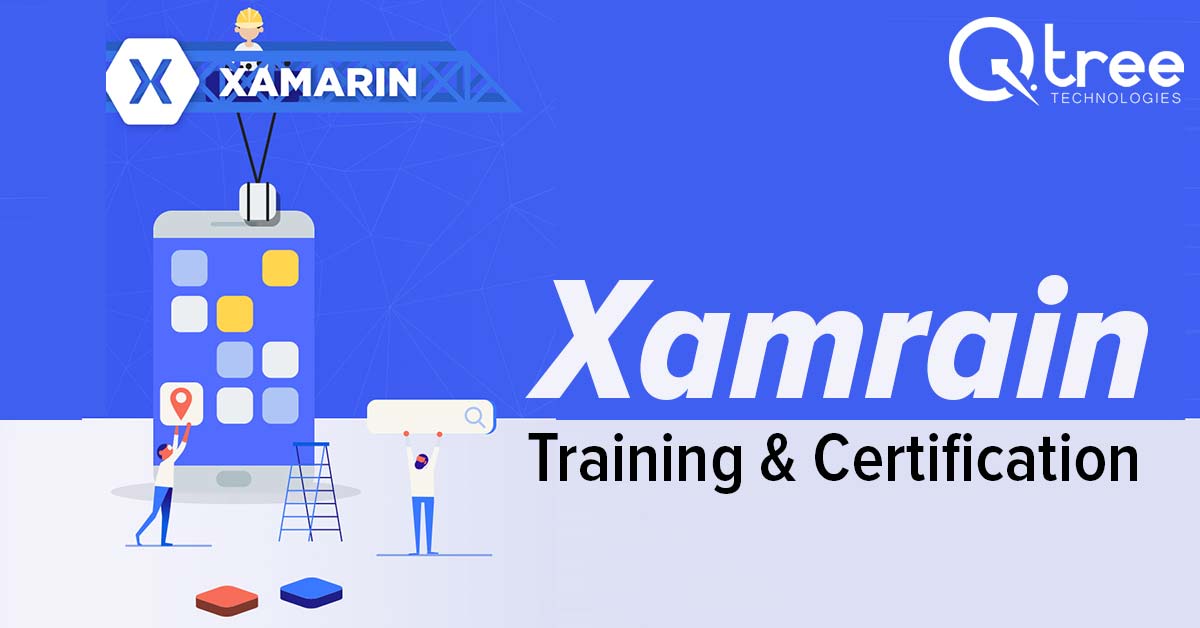
Best Xamrain Training in Coimbatore
Qtree Technologies is the Best Xamarin training institutes in Coimbatore that offers excellent Xamarin training on all Xamarin certification pathways. The institute channels a great demand in the present and years to come. These Xamarin training certification courses at Qtree bring in an exceptional increase in the cloud computing industry.
Created By Qtree Technologies
Last Updated Sun, 21-Apr-2019
English
Key Features
Lifetime Access
Realtime Code Analysis
CloudLabs
24x7 Support
Money Back
Project Feedback
About Xamrain Training in Coimbatore
What Will I Learn?
- sadf
Our Course Details
Xamarin Course Syllabus:
Module 1:- Introduction to Xamarin.Forms
Xamarin.Form is a framework that allows developers to rapidly create cross-platform user interfaces. It provides its own abstraction for the user interface that will be rendered using native controls on iOS, Android, Windows, or Windows Phone.About Mono- What Is Xamarin Forms?
- Cross-platform mobile development
- Xamarin vs. Xamarin.Forms
- Developing Environment
- Visual Studio
- Xamarin studio
Module 2:- First Application on Xamarin.Forms
This module talks about how to create Xamarin project step by step, the difference between Shared project and PCL solution and Activity LifeCycle and how to deploy the App in the Emulator- Cross-platform options
- Shared Projects
- PCL Solution
- Activity Lifecycle
Module 3:-Controls
This section serves as a reference showing many of the UI controls available for use with Xamarin.Forms.In this module, you can learn about the controls for designing the GUI in detail. These are the basic fundamentals that everyone should learn.- Pages
- ContentPage
- Navigation Page
- Tabbed page
- master-details
- carouselPage
- Layouts
- The Kinds and Purposes of Layouts
- StackLayout
- RelativeLay
- AbsoluteLayout
- Views
- cells
Module 4:-XAML
XAML is a declarative markup language that can be used to define user interfaces. The user interface is defined in an XML file using the XAML syntax, while runtime behavior is defined in a separate code-behind file.
- XAML Basics
- XAML Compilation
- XAML Namespaces
Module 5:-user Interface
In this section, we have many user interfaces available for the use with Xamarin.Forms. In this module you are going to learn how to work with different user interfaces- Navigation
- Styles
- Introduction
- Explicit Styles
- Implicit Styles
- global styles
- ListView
- Maps
Module 6:-Themes
Xamarin.Forms Themes were announced at Evolve 2016. A theme is added to a xamarin.Forms application to change the look and feel of the application.This module will help you learn different Themes, control Appearance and Style CSS .- Light Theme
- Dark Theme
- Creating a Custom Theme
Module 7:- Database Access
Xamarin.Forms applications can use the SQLite.NET PCL NuGet package to incorporate database operations into shared code by referencing the SQLite classes that ship in the NuGet.This module deals with how to connect to SQLite Database and how to store data permanently with a neat Employee example.Module 8:-Webservices
To function correctly, many mobile applications are dependent on the cloud, and so integrating web services into mobile application is a common scenario. The Xamarin platform supports consuming different web service technologies and includes in-built and third-party support for consuming RESTful, ASMX, and Windows Communication Foundation (WCF) services.- Consuming Rest Service
- Working with network resources like HTTPs, JSON, Cloud Services
Module 9:- App Deployment
This Module gives an overview of the distribution techniques that are available for Xamarin.iOS, Xamarin.Android applications and serves as a pointer to more detailed documents on the topic.Through this module, you will learn how to generate .apk(android), IPA(iPhone) app and how to deploy Android app in Google Play store and iPhone app in Apps store.Module 10:-Xamarin UI Test and Xamarin Test cloud
Xamarin.UITest, an Automated UI Acceptance Testing framework based on Calabash that allows programmers to write and execute tests in C# and NUnit that validate the functionality of iOS and Android Apps. Mobile users are perhaps among the most demanding consumers of software today – they expect mobile apps to be responsive, bug-free, and low cost. Apps that don’t meet this expectation will be promptly uninstalled and given a very low rating
sdfg
- dfg
Benefits of Xamarin Training in Coimbatore
dfgh
Palcements of Xamarin course
sdfg
FAQ?

